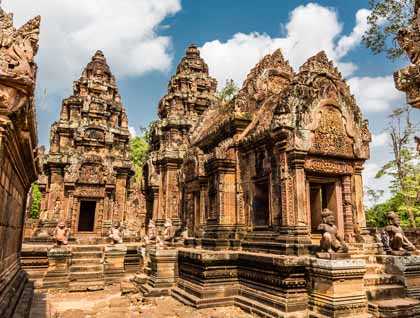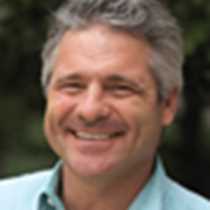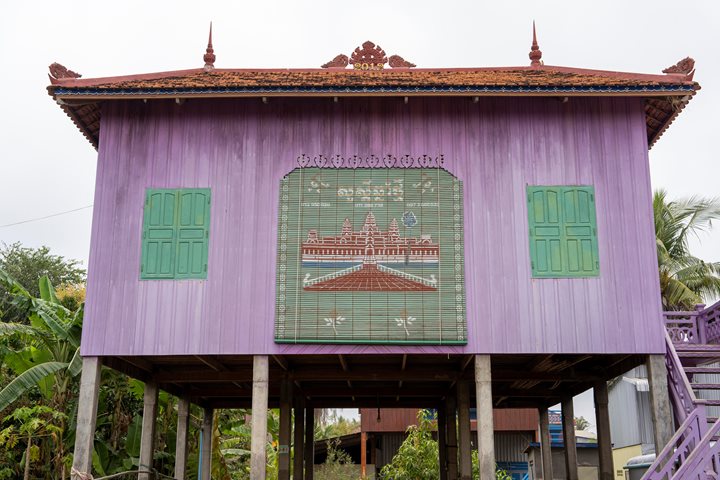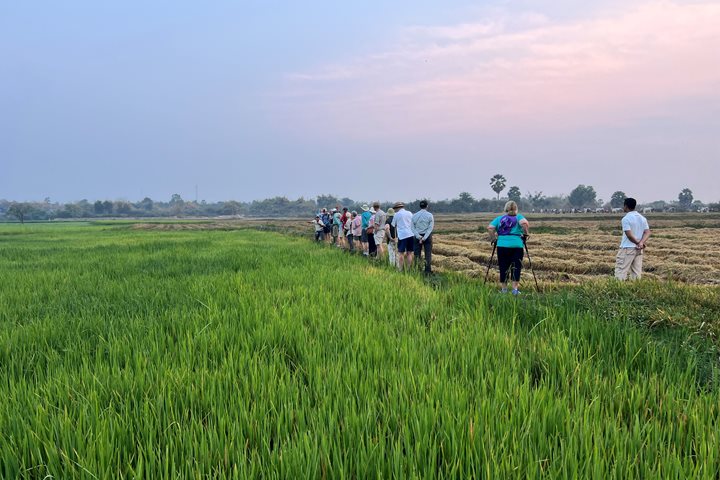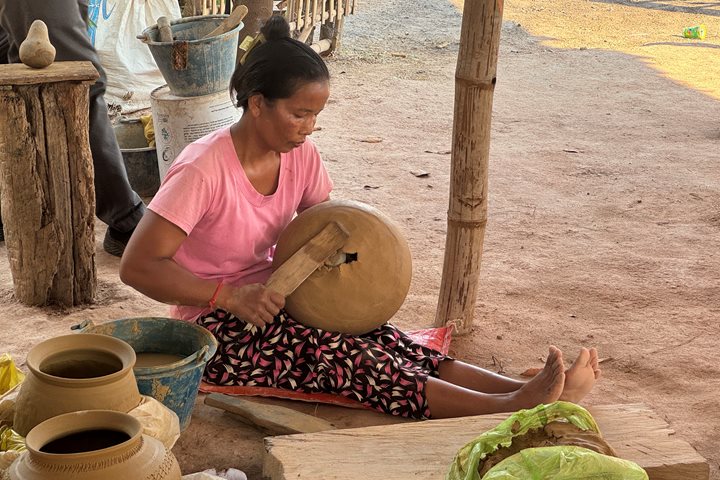“Wow, I can’t believe we’re finally here . . .”
“Angkor Wat; I never thought I’d see the day . . . “
“I didn’t know there would be so much jungle . . .”
It’s one of the most exotic places we’ve all grown up hearing about – Angkor Wat – and finally we are here. And it turns out that Angkor Wat is just one of dozens of magnificent and mysterious temples that have been recovered from the jungle growth in what is now known as the Angkor Temple Complex. We tried to adjust our minds, bodies, body clocks and souls as we drove through the jungle past craggy and crooked walls of stone, expansive geometric moats, misplaced lakes of stone containment, trees, giant trees, and occasional twisted and leaning sandstone temples and towers that yielded again to more giant trees. We had arrived in another world.
The drive out to the Banteay Srei Temple served as an introduction to our guides, to Cambodia, to Angkor, and to a mythological universe that dominated Southeast Asia for 500 years. We learned that Cambodians call their country Kampuchea, and themselves Khmer. So Khmer people live in Kampuchea, and speak Khmer with words like “Angkor,” which means “city” and “wat,” which means “temple.” Brahma and Shiva and Vishnu are the three main gods of the endless Hindu pantheon, but wait, is this Hindu or Buddhist? Theravada or Mahayana? And who or what was a Jayavarman? The names and words were as new and dizzying as the passing landscapes: stilted houses, tuk tuks, water buffalo, lotus ponds, palm sugar fruit, rattan baskets piled high as a house, on the back of a motorbike, orange-robed monks, roadside monkeys and a whirlwind of other images passing like a dream. No, we’re not in Kansas any more . . .
Our expedition staff assured us that all of this would fall into place in the next week as we begin our enchanted journey into a land that has changed little from the Angkorian Empires a millennium ago. And thus we slowly marveled through the pink sandstone of Banteay Srei temple, where we were introduced to the Hindu gods and stories that were the religious base of the Angkor empire. And in the afternoon we didn’t have to think at all. We walked through the temple of Ta Prohm, where the immense spung trees and strangler figs still hold the ancient temples in nature’s grasp. We were in a science fiction adventure film, where giant roots crawled through temple doors and pulled down walls with visible movement. Surely I see these roots moving, don’t I?
In the evening, National Geographic expert Barry Till gave a talk that started to give a foundation to the wondrous experiences of the day. We’ve arrived at Angkor Wat, and we are just getting started.

